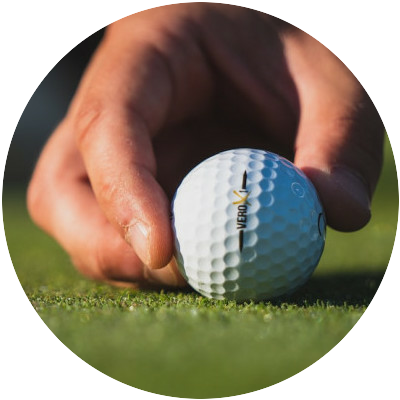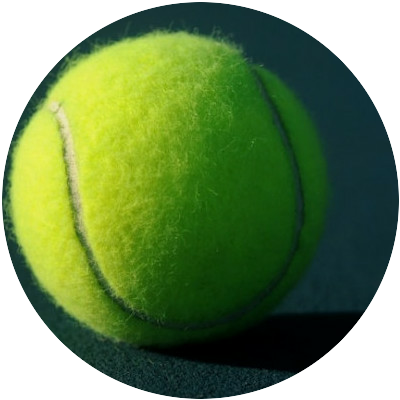
The golf ball is subjected to testing and approval by the United States Golf Association (USGA) and the Royal and Ancient Golf Club of St. Andrews (R&A). Under these Association rules of golf, a ball has a mass of no more than 1.620 oz (45.9 g), has a diameter of not less than 1.680 inches (42.7 mm), and performs within specified velocity, distance, and symmetry limits, like golf clubs. Those that do not conform to regulations may not be used in competition.
EARLY BALLS
Early balls were made from hard wooden, round balls, made from hardwoods such as beech and box, and were the first balls used for golf between the 14th through the 17th centuries, although there is no definite evidence that they were used actually in golf in Scotland. It is more likely, that leather balls filled with cow’s hair were used, which was imported from the Netherlands from at least 1486 onwards.
FEATHERIE

A featheie ball is a hand-sewn round leather pouch stuffed with chicken or goose feathers and coated with paint, usually white or color. The feathers were boiled and softened before they were stuffed into the leather pouch. it was a tedious and time-consuming process. An experienced ball maker could only make a few balls in one day, this was an expensive ball. it would be 2-5 shillings, which is equivalent to US$10-20 today.
There were a few drawbacks to the featherie because it became difficult to form a perfectly spherical ball, which made the ball often fly irregularly. Also when wet the ball feathery ball distance is reduced. There is also a possibility of it splitting open upon impact, both when hit or when contacting the ground or another hard surface.
THE GUTTIE
In 1848, the Rev. Dr. Robert Adams Patterson invented the gutta-percha(or guttie). The guttie was made from the dried sap of the Malaysian sapodilla tree. The sap had a rubber-like feel and could be made spherical by heating and shaping it in a mold. Guttie was cheaper to produce and could be reformed if they become out-of-round or damaged, which makes the aerodynamic quality much more improved
Accidentally, it was discovered that nicks in the guttie from normal use actually provided a ball with more consistent ball flight than a guttie with a smooth surface. Thus makers started deliberately putting indentations into the surface of the new ball.
WOUND GOLF BALLS
A wooden golf ball was developed in 1898 by Coburn Haskell of Cleveland, Ohio. His ideas came after he visited the B.F. Goodrich Company he intentionally picked up some rubber thread and wound it into a ball. In bouncing the ball, it flew almost to the ceiling, he immediately created a patent for this new find and this was the birth of the 20th Century wound golf ball that would soon replace the guttie golf ball. This was known as the rubber Haskell golf ball.
MODERN RESIN AND POLYURETHANE BALLS
In the mid-1960s, a new synthetic resin, an ionomer of ethylene acid named Surlyn was introduced by DuPont as were new urethane blends for golf ball covers, and these new materials soon displaced balata as they proved more durable and more resistant to cutting.
Golf balls came to be classified as either two-piece, three-piece, or four-piece balls, according to the number of layered components. These basic materials continue to be used in modern balls.
With further advancement in technology it was able to create balls that can be customized to a player’s strengths and weaknesses, and even allowing for the combination of characteristics that were formerly mutually exclusive.
Liquid cores were commonly used in golf balls as early as 1917. The liquid cores in many of the early balls contained a caustic liquid, typically an alkali, causing eye injuries to children who happened to dissect a golf ball out of curiosity.
By the 1920s golf balls were still at times exploding when dissected and were causing injuries due to the presence of crushed crystalline material present in the liquid cores.
DESIGN
Dimples first became a feature of golf balls in 1905 William Taylor registered a patent for a dimple design. he then developed a pattern consisting of regularly spaced indentations over the entire surface, and later tools to help produce balls in series. The dimple became the dominant design due to the superiority of the dimpled cover in flight.
AERODYNAMICS
When a ball is hit, the impact, which lasts less than a millisecond, determines the ball’s velocity, launch angle, and spin rate, all of which influence the trajectory and its behavior when it hits the ground.
First, the dimples on the surface area of a golf ball cause the boundary layer on the upstream side of the ball to transition from laminar to turbulent. The turbulent boundary layer is able to remain attached to the surface of the ball much longer than a laminar boundary with fewer eddies and so creates a narrower low-pressure wake and hence less pressure drag. This reduction in pressure drag allow the ball to really travel farther.

CONCLUSION
There are many types of golf balls on the market today and players often have difficulty in making decisions on what to buy. Mainly golf balls are divided into two categories: recreational and advanced balls.
Recreational balls are made for the ordinary golfer, who generally has low swing speeds (80 miles per hour (130 km/h) or lower) and lose golf balls on the course easily.
These balls are made of two lawyers, with the outside layer firmer than the core. Their lower compression and side spin reduction characteristics suit the lower swing speeds of average golfers quite well. Hence, they have lower prices than the advanced balls, lessening the financial impact of losing a ball to a hazard or when the ball goes out of bounds.
Advanced balls are made of multiple layers (three or more), with a soft cover and firm core. These advanced balls induce greater spin from lofted shots using wedges clubs especially, as well as a sensation of softness in the hands in short-range shots.
usually, these balls require a much greater swing speed and thus more physical strength to properly compress at impact. If the compression of a golf ball does not match a golfer’s swing speed, either a lack of compression or over-compression will occur, which results in a loss of distance. other choices golf players must include is brand and color, color balls and upscale brands really becomes more expensive.
